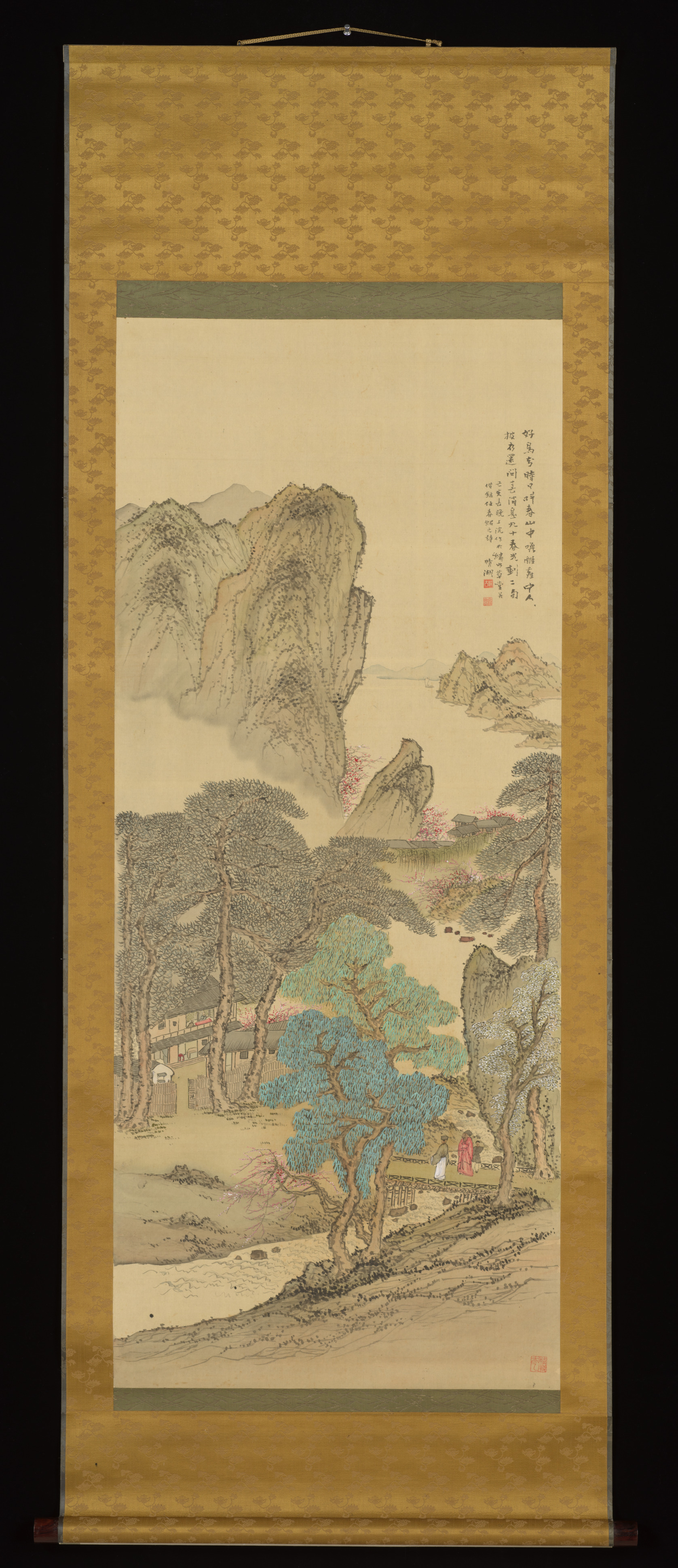Landscape in Blue and Green
Okuhara Seiko Japanese
Okuhara Seiko, born into a high-ranking samurai family, emerged as a prominent woman artist in the male-dominated literati tradition through her mastery of Chinese-style calligraphy, poetry, and painting. An example of her work in the blue-green (qinglu) mode of the landscape-painting tradition, the scroll includes a poem by the eighteenth-century military official Ren Jing, which reads:
好鳥知時日叫春 山中喚醒塵中人
披衣還問春消息 九十春光剩二旬
Attractive birds, aware of the season,
sing songs of spring every day.
And in the mountains, they rouse those
immersed in the dust of the world.
Still dressed in thick garments,
they inquire about the spring.
Of the ninety splendid days of spring,
only twenty remain.
Due to rights restrictions, this image cannot be enlarged, viewed at full screen, or downloaded.
This artwork is meant to be viewed from right to left. Scroll left to view more.



